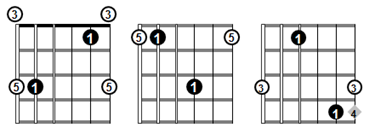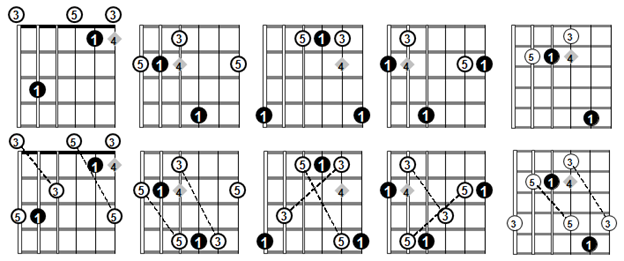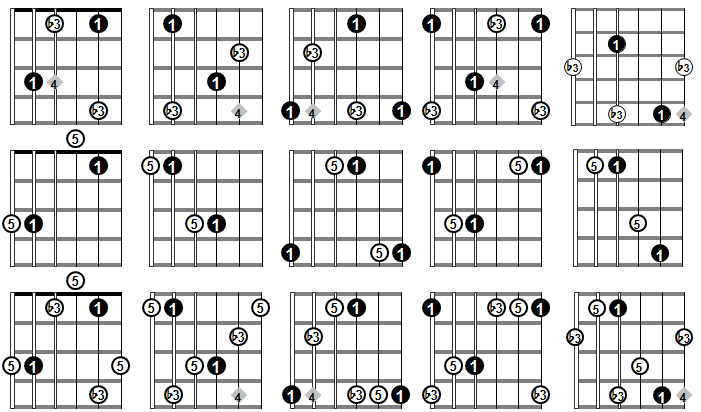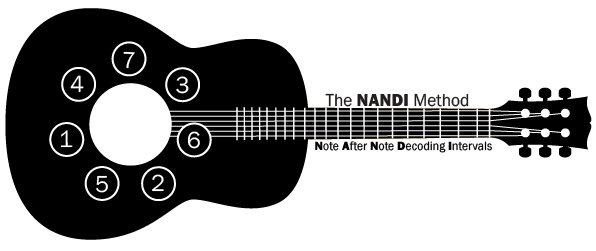Let’s talk about arpeggios.
Arpeggios are one of the most important devices in guitar. As you become a better guitar player and get into improvisation, especially if you play jazz, having an understanding of arpeggios is very important.
Guitarists play arpeggios quite extensively, as they are made up of notes that are found within a single chord. This means that major and minor triad arpeggios create sounds in harmony with their corresponding chords.
Of course, to optimize your use of arpeggios, you need to be able to understand how to find the notes within them.
Major Triad Arpeggios
A major triad, as many of you know, has a root (1), a third (3), and a fifth (5). These are the intervals that are found within the major triad.
Make a note that with every shape, there will be two instances of both the third and the fifth. The question is,
How do we go about finding these intervals?
A third is found to the right of the root, while a fifth can be found to the left of the root.
You can find a major third one fret down from the root on the adjacent string. The main exception to this rule is when we are looking for the third on the B string (A shape). In this instance, the third will be found on the same fret rather. Below, you see one instance of the third to the right of the root and the fifth to the left of the root in the 5 CAGED shapes.

Since we have two E strings, when we have an interval on either one of these strings, we can plot it on the other one, due to the fact that they mirror one another.

There is a perfect fifth between the string sets:
- E-B
- G-D
- D-A
- A-E

Because there are fifths between these string sets, you will be able to find the 5 on the same fret as the root, though one string down. Of course, the exception here is when we are moving from the B to the G string (C shape). The 5 on the G string can be found one fret down from the root on the B string.

Starting from the lower root, once you have found one instance of the third and the fifth intervals, you can then use the octave method to find identical intervals. This will help you to complete the major triad arpeggios within the five CAGED shapes, as you can see below.
In each of the CAGED shapes, you can find identical intervals two frets apart on the E-D, A-G, and B-A strings, or three frets apart on the D-B and G-E strings.

Minor Triad Arpeggios
Now that you have an understanding of major triad arpeggios, let’s talk about minor triad arpeggios. A minor triad is similar to a major triad with a root (1) and a fifth (5), though there is a minor third (♭3) instead of a third.
The minor triad arpeggios are similar to the major triad arpeggios in another way as well, as we will find two instances of the ♭3 and 5. When there is a minor third (♭3) two frets down from the root, you can plot the minor third on the same string as the root.
When the ♭3 is two frets down from the root on the highest fret in the shape, you will instead plot it two frets down on the adjacent string.
When you are plotting the fifth, you can plot it to the left of the root on the same fret instead. The exception to take note of is when you are plotting the fifth from the root on the B string. In that case, you will instead plot it one fret down. Check out the diagrams below to see how the third and fifth intervals are plotted separately and collectively in each of the 5 CAGED shapes.

As always, the idea with this method is to stay within a five fret span so that the arpeggios are easier to play.
